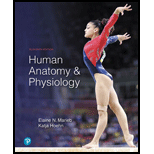
Case summary:
An astronaut Captain Fallowell is a 62-year-old male. He spent the last 8 months in the international space station. The captain passed out in the middle of the speech during his first speaking engagement. He is very alert and oriented man. The captain noticed that his pulse rate was racing down during the speech and his blood pressure was different when he was lying down and standing. The reflexes of the Captain were normal and he showed no sign of any kind of trauma.
Characters in the case:
Captain Fallowell.
Adequate information:
The Captain’s heart rate was 85 beats per minute. His pulse was very weak and his blood pressure was recorded at 116/66 mm Hg (millimeters of mercury) when he was lying down. His heart beats and blood pressure was 112 beats per minute and 94/52 mm Hg, respectively, in the standing position.
To determine:
The effect of more circulating blood on the following:
a. renin levels, b. aldosterone levels, c. ADH (Antidiuretic hormone) levels, d. thirst, e. atrial natriuretic peptide, f. urine volume, and g. the blood volume.
Want to see the full answer?
Check out a sample textbook solution
Chapter 19 Solutions
Human Anatomy & Physiology (11th Edition)
- During heavy exercise, how much cardiac output may increase?arrow_forward54.The ECG records the electrical stimulation of cardiac muscle by the conduction system and not the contraction of the muscle itself.? True or False ?arrow_forward108. A resting subject is passively tilted from the supine to the standing position. This maneuver causes an acute increase in which of the following?A) Cardiac outputB) Cerebral blood flow C) Heart rateD) Renal blood flowE) Right atrial pressurearrow_forward
- Cocaine use causes vasoconstriction. Is this likely to increase or decrease blood pressure, and why?arrow_forwardWhy does increasing EDV increase contractility?arrow_forwardExercise can trigger symptoms of AMS due to which of the following? low partial pressure of oxygen low atmospheric pressure abnormal neural signals small venous reserve of oxygenarrow_forward
- What would be the drawback of cardiac contractions being the same duration as skeletal muscle contractions?arrow_forwardHigh blood pressure would be a result of ___________ . a high cardiac output and high peripheral resistance a high cardiac output and low peripheral resistance a low cardiac output and high peripheral resistance a low cardiac output and low peripheral resistancearrow_forwardDiscuss the importance of atresiaarrow_forward
- 47) Besides blood pressure management, what is another common indication of antiarrhythmics? A) Glaucoma B) Dizziness C) Heart arrhythmia D) Muscle sorenessarrow_forward30. Using the Baro-receptor feedback mechanism, the parasysmpathetic nervous system can affect which of the following variables to adjust blood pressure? A.heart rate B.stroke volume C.vascular resistance D.contractilityarrow_forward115. In which of the following tissue does hypoxia elicit vasoconstriction?A) BrainB) Heart C) Liver D) LungE) Skeletal musclearrow_forward
 Biology 2eBiologyISBN:9781947172517Author:Matthew Douglas, Jung Choi, Mary Ann ClarkPublisher:OpenStax
Biology 2eBiologyISBN:9781947172517Author:Matthew Douglas, Jung Choi, Mary Ann ClarkPublisher:OpenStax Anatomy & PhysiologyBiologyISBN:9781938168130Author:Kelly A. Young, James A. Wise, Peter DeSaix, Dean H. Kruse, Brandon Poe, Eddie Johnson, Jody E. Johnson, Oksana Korol, J. Gordon Betts, Mark WomblePublisher:OpenStax College
Anatomy & PhysiologyBiologyISBN:9781938168130Author:Kelly A. Young, James A. Wise, Peter DeSaix, Dean H. Kruse, Brandon Poe, Eddie Johnson, Jody E. Johnson, Oksana Korol, J. Gordon Betts, Mark WomblePublisher:OpenStax College Human Physiology: From Cells to Systems (MindTap ...BiologyISBN:9781285866932Author:Lauralee SherwoodPublisher:Cengage Learning
Human Physiology: From Cells to Systems (MindTap ...BiologyISBN:9781285866932Author:Lauralee SherwoodPublisher:Cengage Learning Cardiopulmonary Anatomy & PhysiologyBiologyISBN:9781337794909Author:Des Jardins, Terry.Publisher:Cengage Learning,Lifetime Physical Fitness & WellnessHealth & NutritionISBN:9781337677509Author:HOEGERPublisher:Cengage
Cardiopulmonary Anatomy & PhysiologyBiologyISBN:9781337794909Author:Des Jardins, Terry.Publisher:Cengage Learning,Lifetime Physical Fitness & WellnessHealth & NutritionISBN:9781337677509Author:HOEGERPublisher:Cengage





